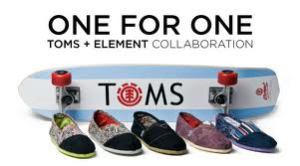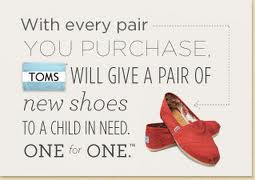I’d always thought that businesses when a business links with a charity it was out the goodness of their cold shiny business heart……..
Cause related marketing (CRM) is definitely not an act of compassion. It is simply one big money making scheme for the business which happens to benefit a good cause at the same time.
One famous CRM on-going campaign is the link between McDonalds and Ronald McDonald houses which provide a home for the families of sick children whilst they are in hospital. In the video below, there is a quote from the CEO of McDonalds saying the charity as “at the heart and soul of McDonalds”, but is this really believable…..is the only reason McD’s exist to raise money and awareness for the houses…I somehow think not.
Okay, so it is nice that companies do attempt to support charities but it is really for their own benefit, to enrich the relationship between the business and the stakeholder and enrich the brand image whilst increasing brand awareness through targeting new customers (Hoeffler & Keller 2002). The way that the consumer perceives the brand is one of the most vital parts of the brand umbrella (a term I just made up to include everything about branding), if a consumer doesn’t like the brand or the values it carries then they simply won’t purchase from that brand.
Consumers may sometimes purchase a product simply because it is linked with the support of a good cause and made the consumers feel more positively towards the brand (Ross, Strutts & Patterson, 1991). I know that I always feel obliged to purchase a product when I see a product is linked to charity, this could because I want to be seen as pro-social by other people. By making purchases that link to good causes, other people will see what I have bought and will think that I am a wonderful giving person who supports charity (Ariely, Bracha & Meier, 2009). I know I don’t buy the innocent smoothies at any other time of the year than the time when they have the hats on because I know that there will be a donation to Age Uk (and also the hats are absolutely adorable). I do however wonder how effective the CRM is at promoting the good cause though as I knew that innocent donated to a charity for older people but I wasn’t sure which one so is CRM effective as people think?
One company has cleverly played upon a term which most consumers know extremely well and has adapted it to make them look good, help a charity and help the consumer feel good. ‘Toms’ shoes have a one for one policy (also known as Buy one Give one). When a customer purchases a pair of Toms shoes, a pair of shoes are sent to Africa to help give a child in need something. Now I’m all for helping to clothe children in Africa but do they really need a pair of what I consider high end high-street shoes? Toms shoes are essentially flimsy cotton pumps with mere price tags of £35! Ok so you get two pairs for that price (one for you and one for your new African child friend) but £35…..I have seen Tom replicas (ok so they don’t have the name)selling from about £5. That could buy 6 pairs of shoes, one for you then you could buy another 4 pairs and ship them to Africa giving 4 kids shoes for the same price….
But I think what makes Toms so popular and people purchase them is the feel good factor you get when you buy them which may make consumers think that they got this good feeling from the company which may make them purchase from Toms again. It could be an interesting topic to explore using research however since people tend to lie/tell people what they want them to hear, the research would need to find a way to mind read……
But how does Toms create these feelings of warmth and ‘I am a wonderful personness’????? They put messages on the shoe box saying how much of a nice person you are for giving a child a pair of shoes and they put pictures of African children in the shoes to tug at the old heart strings since emotive images of children cause an emotive response Burt and Strongman.
Although I don’t own any myself (which is highly surprising as it’s the kind of clever ploy that I fall for), I can see why people do buy them (especially women since we are more likely to make CRM related purchases )(Ariely, Bracha & Meier, 2009). Is this because women are more emotional and have more feelings towards charities or because men do not feel that donating will be adhering to a social norm since creating social norms can increase male donations to charity (Croson, Handy & Shang, 2010).
Overall, companies can use CRM and links to increase brand awareness and to help to increase profits since consumers are more likely to purchase when brands have links to the business for example the fact that Toms sells shoes and the good cause is shoes is more effective than McDonalds and the Ronald McDonald houses. It is seen as more favourable when this is the case which may make consumers more likely to make a purchase.
I will leave you with one final thought. If you love ice cream, you need to love the honey bee too. It’s a very linked CRM campaign since Haagen-Dazs would not exist without the bees and so it is definitely in their interest (on more than one level) to promote people to save the bees.




